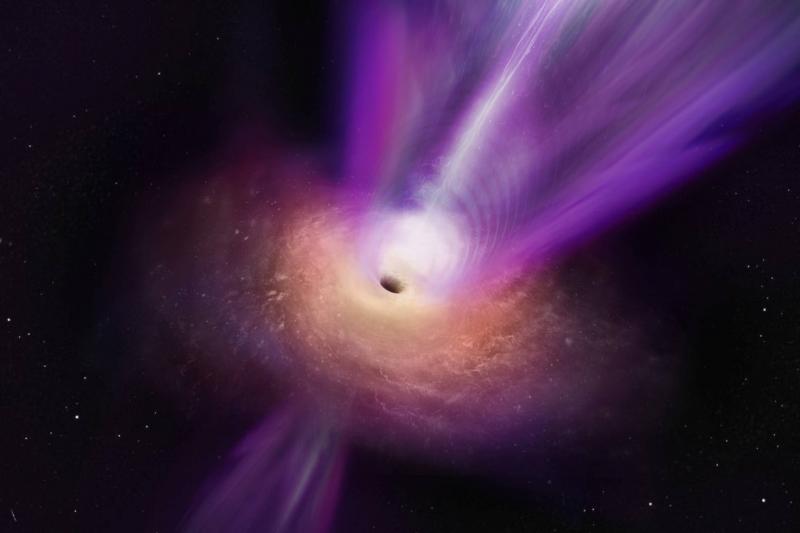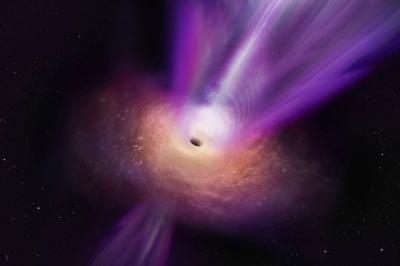Scientists have unveiled a new image of a black hole, notable as the first to show the violent events occurring around one of these insatiable cosmic phenomena, revealing the tremendous outpouring of high-energy particles into space. The new image, one of the first captures of black holes, was obtained using 16 telescopes located in different parts of the Earth, forming an observational dish the size of a planet. The supermassive black hole captured in the image is located at the center of a relatively nearby galaxy, Messier 87 (M87), approximately 54 million light-years from Earth.
The black hole itself, with a mass 6.5 billion times that of our Sun, also appeared in the first-ever image captured of this cosmic phenomenon, revealed in 2019. Another image of a different black hole was captured last year. The two images show only the darkness of the black hole and a ring of bright material surrounding it, with the latest image also depicting light emitted at a longer wavelength, expanding what can be observed.
Observing black holes is difficult due to their nature, as they are entities with a tremendous gravitational pull that not even light can escape once it crosses their threshold. Supermassive black holes are found at the centers of most galaxies. Some not only consume surrounding material but also launch massive and fiery jets of high-energy particles into space.
The new image illustrates how the base of these jets connects with the material swirling around the black hole in a ring-like structure. Astrophysicist Rou Shenlu from the Chinese Academy of Sciences in Shanghai, the lead researcher in the study published in the journal Nature, stated that the image is the first to demonstrate the connection between the flow (of material being pulled inward) near the supermassive black hole and the source of the outflow.
Co-study astrophysicist Thomas Krichbaum from the Max Planck Institute for Radio Astronomy in Germany remarked, "This helps in developing a better understanding of the complex physics related to black holes, how the jets are launched and accelerated, and how the inflowing material is related to that emanating from the black hole."
Another co-study astrophysicist, Kazunori Akiyama from the Haystack Observatory at the Massachusetts Institute of Technology, described it as "what astronomers and astrophysicists have been waiting to see for over half a century... it marks the dawn of an exciting new era."
The three scientists are members of the Event Horizon Telescope project, an international collaboration that began in 2012 with the goal of directly observing the environment surrounding black holes.




